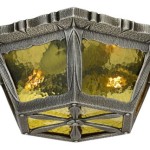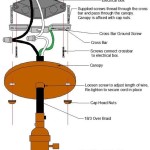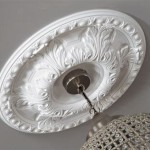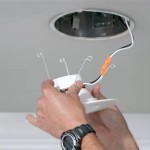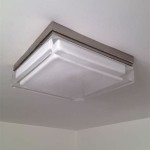What Type Of Light Bulbs Do Ceiling Fans Take?
Understanding the suitable light bulbs for ceiling fans is crucial for the optimal functioning and ambiance of any room. Light bulbs play a vital role in determining the brightness, color temperature, and overall aesthetics of the space.
This article will delve into the essential aspects of selecting appropriate light bulbs for ceiling fans, considering factors such as socket type, wattage, bulb shape, and color temperature. By considering these factors, you can ensure that your ceiling fan not only provides adequate lighting but also enhances the overall design and ambiance of your room.
Socket Type
The socket type of a ceiling fan refers to the base of the light bulb that fits into the fixture. The most common socket types for ceiling fans are E26 (medium base) and E12 (candelabra base). E26 bulbs are the standard size for most household light fixtures, while E12 bulbs are smaller and primarily used in decorative lighting.
Wattage
Wattage determines the brightness of a light bulb. The higher the wattage, the brighter the bulb. However, it's important to consider the wattage limitations of your ceiling fan. Exceeding the recommended wattage can damage the fan's motor or wiring.
Bulb Shape
Light bulbs come in various shapes, each designed for different applications. Common bulb shapes for ceiling fans include A19 (standard bulb), BR30 (floodlight), and G16.5 (globe bulb). The shape you choose will depend on the style of your ceiling fan and the desired light distribution.
Color Temperature
Color temperature refers to the perceived warmth or coolness of light. Measured in Kelvins (K), higher color temperatures produce cooler, bluish light, while lower color temperatures emit warmer, yellowish light. For general lighting, a color temperature of 2700-3000K (warm white) is recommended.
Dimmability
Dimmable light bulbs allow you to adjust the brightness of your ceiling fan's light. If you want the flexibility to control the ambiance of your room, choose dimmable bulbs and ensure that your ceiling fan has a compatible dimmer switch.
Energy Efficiency
Energy-efficient light bulbs, such as LEDs and CFLs, use less energy than traditional incandescent bulbs while providing comparable or even better light output. By choosing energy-efficient bulbs, you can reduce your energy consumption and save money on electricity bills.
Conclusion
Selecting the appropriate light bulbs for ceiling fans requires consideration of various factors. By understanding the essential aspects discussed in this article, you can ensure that your ceiling fan not only provides optimal lighting but also complements the aesthetics and ambiance of your room. From socket type to color temperature, each factor plays a crucial role in creating a space that meets your lighting and design preferences.

How To Choose A Light Bulb For Your Ceiling Fan

Feit Electric 60 Watt Equivalent A15 Dimmable White Filament Cec Clear Glass E26 Led Ceiling Fan Light Bulb Daylight 5000k 2 Pack A1560950cawfilhdrp The Home Depot

The 7 Best Ceiling Fan Light Bulbs Reviews Guide Electronicshub

How To Choose A Light Bulb For Your Ceiling Fan

Candelabra Base A15 2 Pack 40 Watt Clear Ceiling Fan Bulbs 34907 Lamps Plus

The 7 Best Ceiling Fan Light Bulbs Reviews Guide Electronicshub

Feit Electric 60 Watt Equivalent A15 E12 Candelabra Dimmable Cec Clear Glass Led Ceiling Fan Light Bulb In Soft White 2 Pack Bpa1560c 927cafil2 The Home Depot

Ceiling Fan Light Bulbs Led Lights

G E 40 Watts Ceiling Fan Light Bulbs With Candelabra Base

Ceiling Fan Light Bulbs Led Lights
Related Posts

